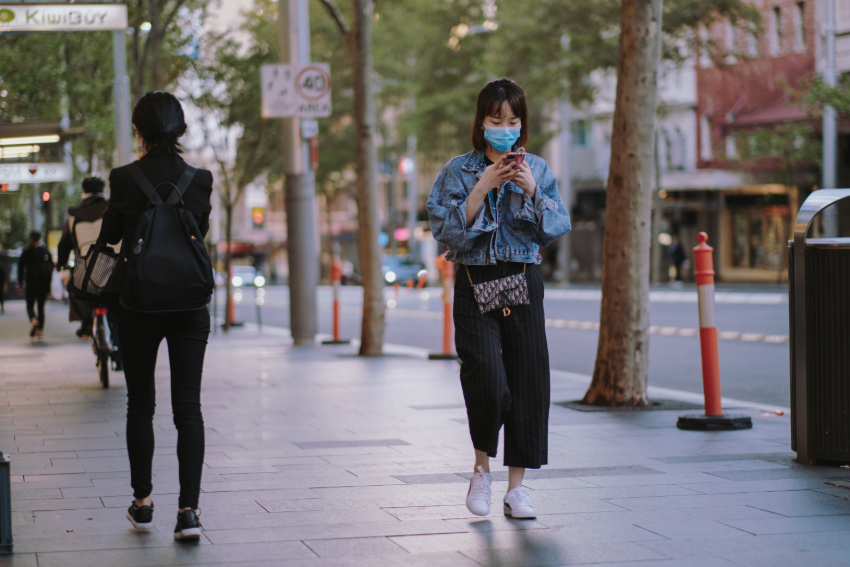Table of Contents
- The early impact on Communication Service Providers
- CSPs answering the challenge
- The impact of COVID-19 on CSPs in Asia
- India: dramatically increased daytime usage
- Australia: similar findings
- Pacific Islands: more than a 25% increase in volume
- Indonesia: a significant volume increase
- The big picture
- How Allot can help
Over the last few months, we’ve seen dramatic changes in network traffic and user behavior because of the pandemic. COVID-19 lockdowns and other measures have changed things.
Many of us are now accustomed to working, learning, and seeking entertainment from home. As such, there has been a lot of analysis on the effects of COVID-19 on the overall global market.
But, what’s coming next? What are the challenges for Communications Service Providers (CSPs), now that COVID-19 is permanently changing us and creating a new normal?
Some of these issues were presented in a position paper and a webinar that we provided to a select audience, but the information is still highly interesting and relevant, so I’d like to share it with you, too, within this blog post.
The early impact on Communication Service Providers
Back in March 2020, during the early stages of the pandemic, in order to manage network traffic, operators in Spain, as an example, were begging customers for help.
When the COVID-19 lockdowns started, Spanish telcos issued a joint statement to customers, asking for fair and reasonable use of the internet over the foreseeable future.
The request to customers included this specific guidance:
- Only download documents that are needed immediately
- For heavy files, send links
- Rather than mobile, use a landline when possible
- Avoid mass emails and collaboration tools such as Microsoft Teams and Slack
- Use bandwidth-hungry leisure applications during off-peak hours
According to a report issued in May, UK broadband download speeds, at some carriers, were dramatically impacted by new customer usage behaviors, such as increased daytime data consumption related to the lockdown.
Regarding voice traffic, mobile network operators like AT&T in the USA noticed a 25-30% average increase in wireless voice minutes during March and April of 2020. But, AT&T is not alone in this trend. According to sources at IDC, T-Mobile and Verizon experienced a similar increase in both voice and data traffic on their mobile networks.
CSPs answering the challenge
Hutchison Drei Austria, part of 3, a leading mobile service providers, is helping its customers during this challenging time with an innovative telehealth solution it developed with Generali Versicherung and drd.
Because pandemic-related restrictions made it difficult for people to visit a doctor personally, the start of this telehealth app, originally planned for a Summer 2020 launch, was brought forward.
According to Drei, “If you can’t go to your family doctor, we’ll bring the doctor to your home: online, safe, and without long waiting times.”
Through the app, this mobile service provider is connecting people in need to physicians from all over Austria for everyday health complaints and more serious issues.
Although Drei may be leading the way, this type of smartphone-delivered medical help is trending internationally and will surely persist long after the worst of the pandemic is over.
The impact of COVID-19 on CSPs in Asia
Are these experiences in Austria, Spain, the UK, and the USA representative of the global trend? Are other parts of the world experiencing the same phenomena?
The broad and varied CSP (communication service provider) landscape in Asia, as well as the sheer number of subscriber customers, provide a unique opportunity to assess the impact of COVID-19 on network operators on a more global scale.
To conduct this assessment, we analyzed changes in network traffic across different types of networks in different countries in Asia:
- Types of network:
- Mobile, fixed
- Countries:
- India, Taiwan, Indonesia, Australia, Pacific Islands
- Location of Data Collection:
- Access, transport, and gateway
India: dramatically increased daytime usage
In India, we observed an overall increase in mobile daily volume in the range of 15-20% more than pre- COVID-19 rates. There was a more pronounced increase of usage during daytime compared to night. Also, Peak Hour Traffic (typically during evening) showed less growth.
We noticed a 7% increase in overall streaming usage on mobile devices, as well as a 35% increase social media and meeting application usage.
Australia: similar findings
Mobile findings were similar in Australia, with an increase of daily utilization of 18%.
Significantly, we see an increase of more than 100% in Zoom usage and a slight increase in other VOIP services as well.
In relation to streaming, we noticed an increase of more than 145% in viewing time (from 2.4 to 3.6 hours, on average).
In Australia, since the outbreak of COVID-19, gaming-related usage also increased significantly, with most of the traffic associated with the Sony PlayStation Store and the download of Xbox games.
As usage expands and peak traffic increases on the network, we are noticing a degradation in performance that may translate to decreased user-perceived quality of experience (QoE). There has been an 8% increase in RAN latency, as well as a 3% increase in re-transmissions.
Pacific Islands: more than a 25% increase in volume
In the Pacific Islands, we observed significantly increased usage during daytime.
Before COVID-19 there was a peak hour in the evening. However, during the pandemic, we are seeing pronounced peaks during the daytime. Furthermore, we see an increase in overall volume by more than 25% per day, every day of the week, with a significant volume increase in Facebook, web, P2P, and streaming applications. Notably, P2P application usage increased by 100%, even on mobile.
Network traffic related to the most popular applications, most notably YouTube and Facebook, increased 25% on top of their already significant usage.
The COVID-19 pandemic seems to be inspiring cybercriminals to increase their level of activity in the region, as well. Since the crisis started, we are seeing more than a 500% increase in network attacks each day, which have the potential to dramatically impact subscribers who are ever more dependent on network traffic for work, study and social activity.
Indonesia: a significant volume increase
On fixed networks, findings in Indonesia were particularly interesting with an increase of daily utilization of as much as 26% more than pre- COVID-19 rates.
However, there was minimal increase in content streaming from premium video content providers. What we saw instead was a very profound impact on web applications and a significant increase in VOIP, music streaming, and file transfer activity.
For example, the impact of the lockdown can be seen more clearly when reviewing the usage of the top applications:
- YouTube had a 40% increase
- Gaming had a 20% increase
- Zoom had a 500% increase
- WhatsApp calls had a 40% increase
- Other VOIP had a 20% increase
- WhatsApp had a 60% increase
The big picture
In summary, these were our findings in Asia:
- Overall Usage
- 20-25% increase in daily volume of traffic
- 10-15% greater peak bandwidth
- 15-55% increase in daytime traffic
- Application Usage
- 10-20% more streaming usage
- 20-30% increased usage of social media and VOIP
- 50-100% increase in business app usage
- 25-100% more traffic related to gaming and P2P
- Security
- 3-5X more network-level attacks
- Quality of Experience
- 5-10% degradation of subscriber QoE (quality of experience)
In regard to the increase in streaming, the actual impact is reduced due to the decision to downgrade to SD (standard definition) by popular content providers. For this reason, we expect streaming volume to climb significantly in the near future as resolution limitations are removed.
Application usage, in general, increased significantly in Asia, which is in-line with other regional trends. However, the list of most popular applications is worth noting. In Asia, the most popular applications were YouTube, WhatsApp, Zoom, Fortnite, and BitTorrent.
All in all, COVID-19 is affecting network traffic everywhere. Some networks are holding up better than others. All networks can be optimized to ensure that performance sensitive applications receive prioritized bandwidth allocation when the networks are congested. This can be implemented while fully respecting net neutrality regulations.
In our experience, networks can handle 10-15% more traffic than expected, while maintaining end-user QoE, through judicious enforcement of real-time traffic management policies. Deep Packet Inspection (DPI) is the only way to achieve the necessary granular visibility into the network traffic as well as the fine-tuned control over bandwidth allocation to (1) manage heavy users, (2) support fair distribution of available bandwidth between contending users, and (3) prioritize or shape applications during peak demand to improve perceptible user experience without investing on network expansion.
How Allot can help
Inline DPI and DDoS mitigation from Allot can further minimize congestion by removing unwanted voluminous traffic, such as DDoS traffic, within seconds.
Traffic management solutions from Allot are powerful tools that can help CSPs (communication service providers), including mobile and broadband network operators, to cope with the ongoing impact of the COVID-19 pandemic and the “new normal” in which all find ourselves.
To learn more, a wealth of information about tools made especially for CSPs has been created to help you.


 SASE and QoE: What you need to know
SASE and QoE: What you need to know Simple and reliable network security management and protection for SMBs
Simple and reliable network security management and protection for SMBs Inline DDoS Mitigation: Is it possible to protect yourself from Tbps DDoS Attacks?
Inline DDoS Mitigation: Is it possible to protect yourself from Tbps DDoS Attacks?


